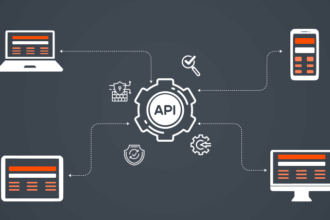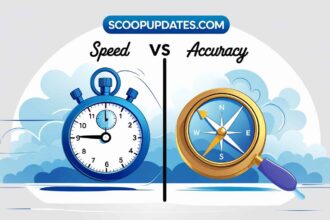Web creation has changed dramatically in the last few years, and AI is driving the shift. What once required a team of coders, designers, and project managers is now being simplified by smart automation. AI is no longer just a tool—it’s a collaborator. It can help with layout decisions, content generation, user interface optimization, and even SEO. The new era is about faster launches, smarter sites, and more accessibility. And for many developers and businesses, this shift is not optional. It’s essential. In this AI-powered age, tools like Webdash are transforming how we think about building and maintaining websites.
Why Traditional Web Development Was Due for a Disruption
The old way of building websites had too many moving parts. Designers crafted mockups. Developers wrote lines of code to bring them to life. Marketers waited weeks—sometimes months—for changes to go live. The process was slow, expensive, and required deep technical skill. On top of that, optimization was often reactive. You launched a site and then tried to improve it. AI flips this model. It learns, adapts, and builds better with every interaction. The Webdash era isn’t about replacing humans—it’s about empowering them to create smarter, faster, and more efficiently.
How AI Streamlines the Design Process
Design used to be a subjective process: what looked good, what felt right. Now, AI can inject data into that equation. It studies user behavior, analyzes color psychology, and suggests layouts proven to work. Instead of staring at a blank screen, you start with AI-generated suggestions. You tweak from there. Webdash-style systems can propose themes, align branding, and ensure accessibility—all in a fraction of the time. The result is a design that’s not just pretty but practical, rooted in real-world performance data.
Smarter Code, Less Hassle
One of the most significant breakthroughs in AI-powered web creation is intelligent code generation. Writing HTML, CSS, JavaScript, and back-end scripts used to be a meticulous job. Today, AI can draft clean, functional code from a simple prompt or layout sketch. You describe what you want, and it builds the backbone. It catches bugs, suggests improvements, and stays up to date with modern best practices. Webdash-style platforms let you work smarter: the code is clean, scalable, and easy to manage—even for non-developers.
Content Creation Gets a Boost
Great websites need strong content. That used to mean endless copywriting and editing cycles. Now, AI can generate headlines, product descriptions, blog posts, and even metadata on the fly. These aren’t lifeless templates—they’re tailored, relevant, and optimized for your audience. The AI can adapt tone, integrate keywords, and stay on brand. With systems like Webdash, teams can produce more content in less time, test variations, and iterate based on engagement. It’s not about cutting corners—it’s about amplifying what humans do best.
Real-Time Personalization Made Simple
Personalization is no longer a nice-to-have—it’s expected. Visitors want experiences tailored to them, from landing pages to calls-to-action. AI makes this easy. It can track user behavior in real time and adjust the site experience accordingly. If a visitor lingers on pricing pages, the AI might highlight discounts or testimonials. If someone visits from a specific location, the site can adjust language or offers. This used to require complicated logic trees. Now, Webdash-style intelligence handles it in the background—seamlessly and instantly.
Optimization Is Baked In
Before AI, site optimization was manual. You had to A/B test, monitor analytics, and comb through heatmaps. That’s still valuable, but AI changes the pace. It tests constantly. It monitors bounce rates, click paths, and session time to recommend tweaks or make them directly. Load time too slow? AI compresses images or adjusts scripts. CTA not converting? It experiments with wording and placement. This is not guesswork. It’s continuous learning, and it’s what makes AI-driven platforms like Webdash stand out.
Better SEO Without the Headache
Search engine optimization is vital but time-consuming. Keyword research, meta tags, backlinks, schema markup—it’s a full-time job. AI simplifies this. It can generate SEO-friendly content, suggest keywords, and even implement technical fixes like improving site speed or mobile responsiveness. With AI in the loop, you don’t just react to Google’s algorithm—you evolve with it. Webdash-style tools make it easy to keep your site optimized without getting buried in minutiae.
Faster Prototyping, Quicker Launches
Time-to-market matters. Whether you’re building for a startup, an event, or a product launch, delays can kill momentum. AI accelerates everything. You sketch out a site idea, and the platform builds it. Need to change direction? You can adjust on the fly. AI keeps the process fluid, reducing the back-and-forth that used to stall projects. With platforms built around the Webdash mindset, going from idea to launch can happen in hours, not weeks.
Accessibility and Inclusion by Default
AI doesn’t forget. It checks contrast ratios, ensures text is screen-reader friendly, and flags design choices that might create barriers. This helps ensure your site is usable by everyone, not just the majority. Accessibility isn’t a final step anymore—it’s woven into the build. And because AI follows best practices by default, even small teams can launch inclusive sites. Webdash-style systems make equity a feature, not an afterthought.
Maintenance Without the Mess
Keeping a site updated used to be a grind. Plugins broke, pages aged, and teams scrambled to keep up. AI can now handle a lot of that behind the scenes. It monitors performance, checks for security issues, and recommends updates proactively. If something breaks, it flags it—or fixes it automatically. This reduces downtime, improves security, and frees up human teams to focus on strategy instead of fire drills. In the Webdash generation, maintenance is less reactive and more preventive.
Collaboration Across Roles
AI-powered web creation doesn’t just benefit developers. Designers, marketers, writers, and analysts can all plug into the same system and work together. Because AI reduces the need for handoffs and rework, teams move faster and stay aligned. A marketer can adjust copy directly. A designer can test layout variants instantly. Everyone works from the same dashboard, with the same data. That’s the Webdash approach—one platform, many players, moving as one.
Future-Proofing Your Digital Presence
The digital world doesn’t stand still. Trends evolve, platforms change, and user expectations grow. AI helps you stay ahead. It learns from what works, predicts what’s next, and adjusts without needing a full rebuild. Your site becomes a living product—always learning, always improving. That’s how you build longevity in a fast-moving world. Webdash-style systems are less about building a site and more about building a platform that evolves with your brand.
Final Thoughts
AI-powered web creation is not a trend—it’s a shift in how we think, build, and grow online. It makes smart design, fast development, and constant optimization the new standard. Whether you’re a freelancer, part of a startup, or leading a large digital team, the message is clear: adapt or fall behind. Platforms like Webdash are leading this change, making intelligent, agile, and accessible websites the rule—not the exception. The future of web development is here. And it’s powered by AI.

















